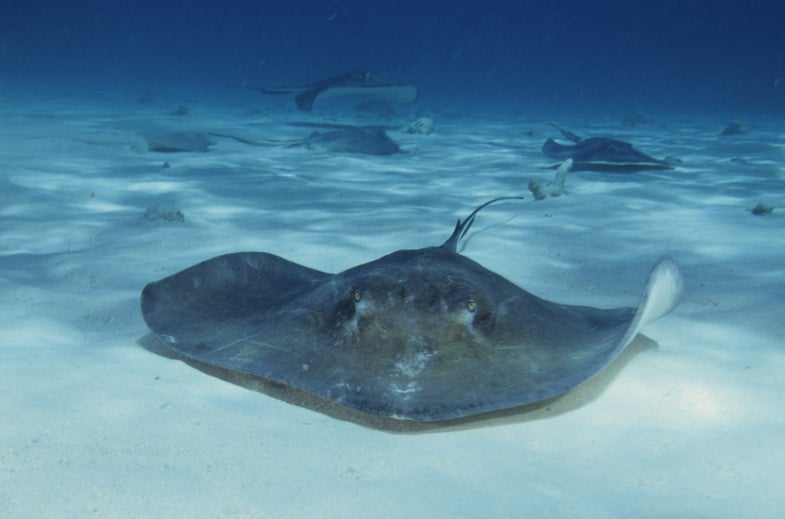Why Underwater Robots Should Swim Like Stingrays
A stingray's efficient way of moving through the water could help engineers design better underwater robots.

The homely stingray’s method of flying through the water could help us design a whole new class of bio-inspired ‘bots, according to mechanical engineers from the University at Buffalo in New York. The rays’ flapping glide could make for more efficient and agile underwater robots and submarines.
In order to investigate why these flat fish move so strangely—”like a flag in the wind,” according to grad student Richard Bottom—the researchers mapped the fluid flows that occur around a stingray as it swims. They looked at the leading-edge vortex, the vortex in front of a moving object that helps birds and insects fly through the air.

Stingray Model
Their model shows that stingrays move through the water with the help of vortices (the blue bubbles in the model above) that create a low pressure field in front of it, and high pressure near its back end. This moves the fish forward without it having to expend much energy.
Bottom and his colleagues are presenting their model at the annual meeting of the American Physical Society’s fluid dynamics division later this month. They don’t say how exactly they might go about designing a stingray-like submarine just yet, but are planning to continue their research by modeling differences between how various types of ray move.
